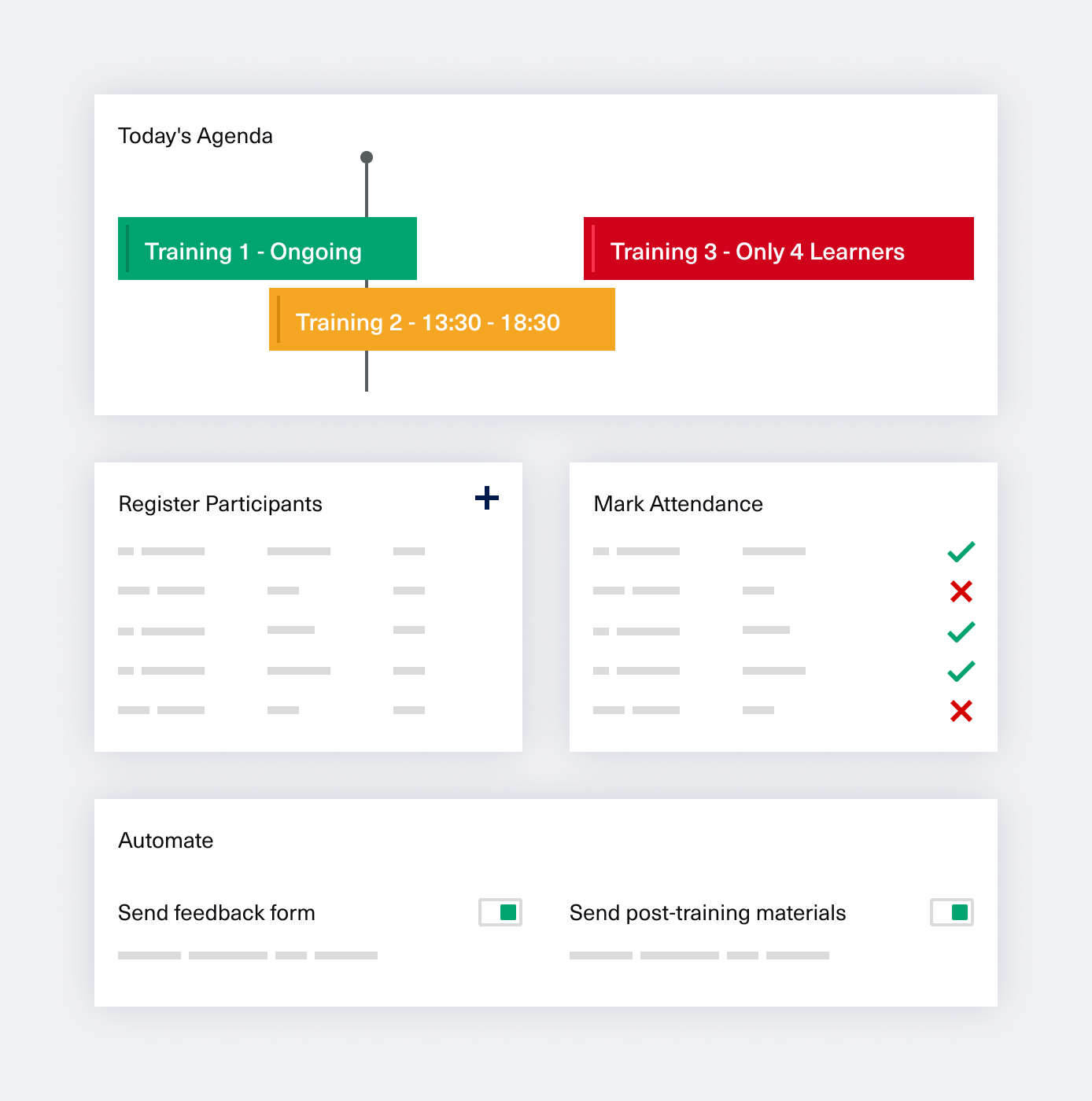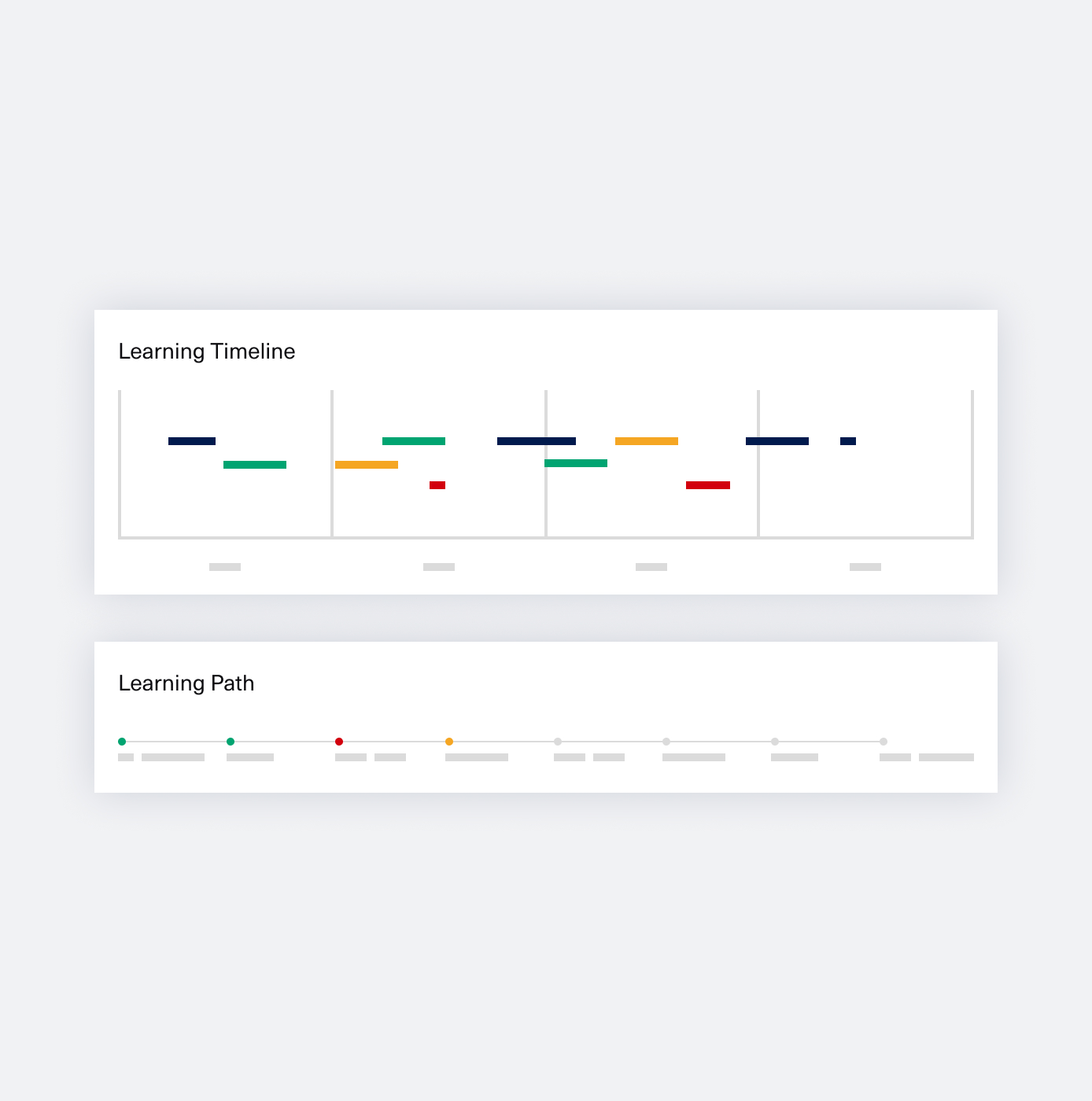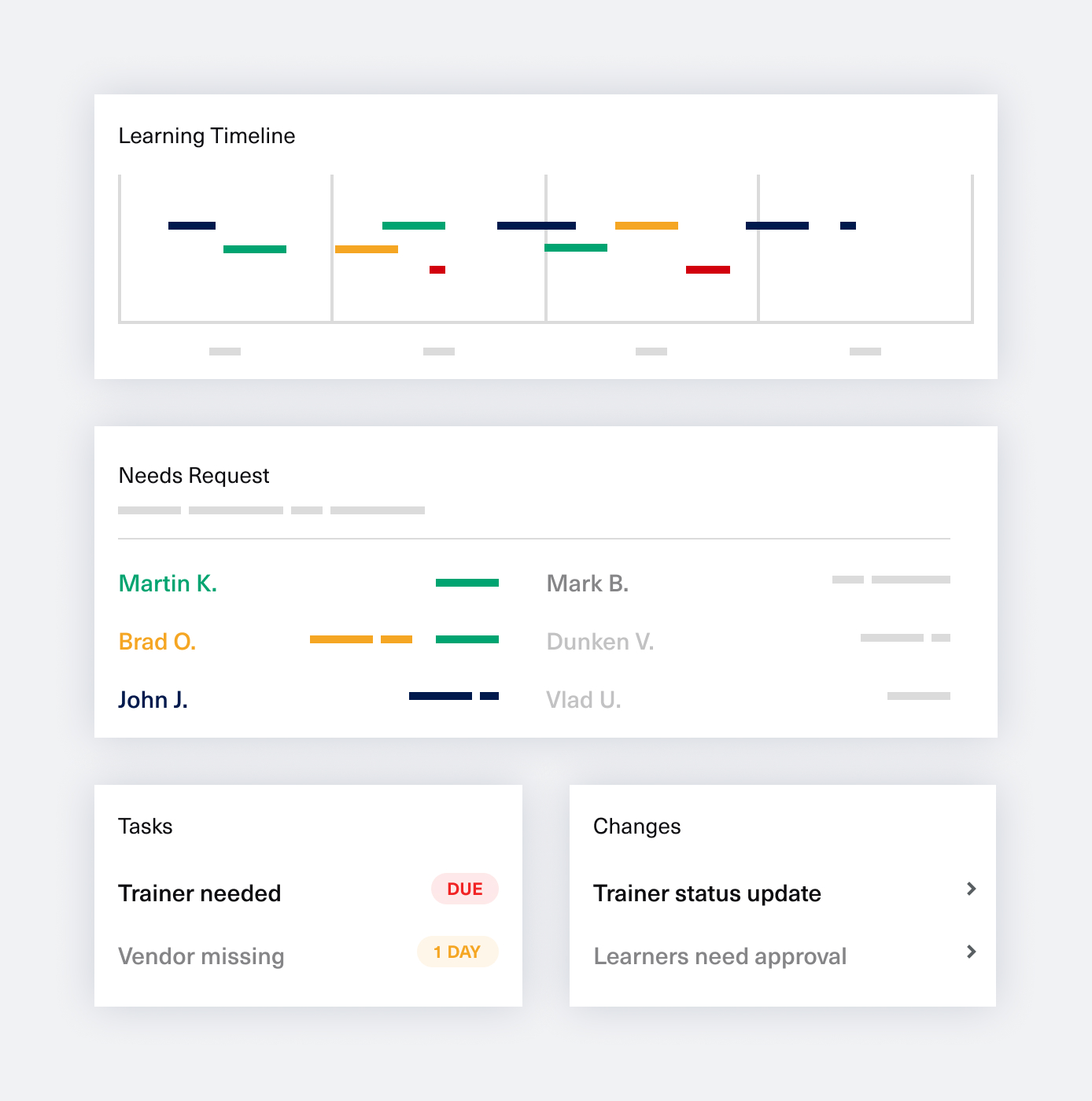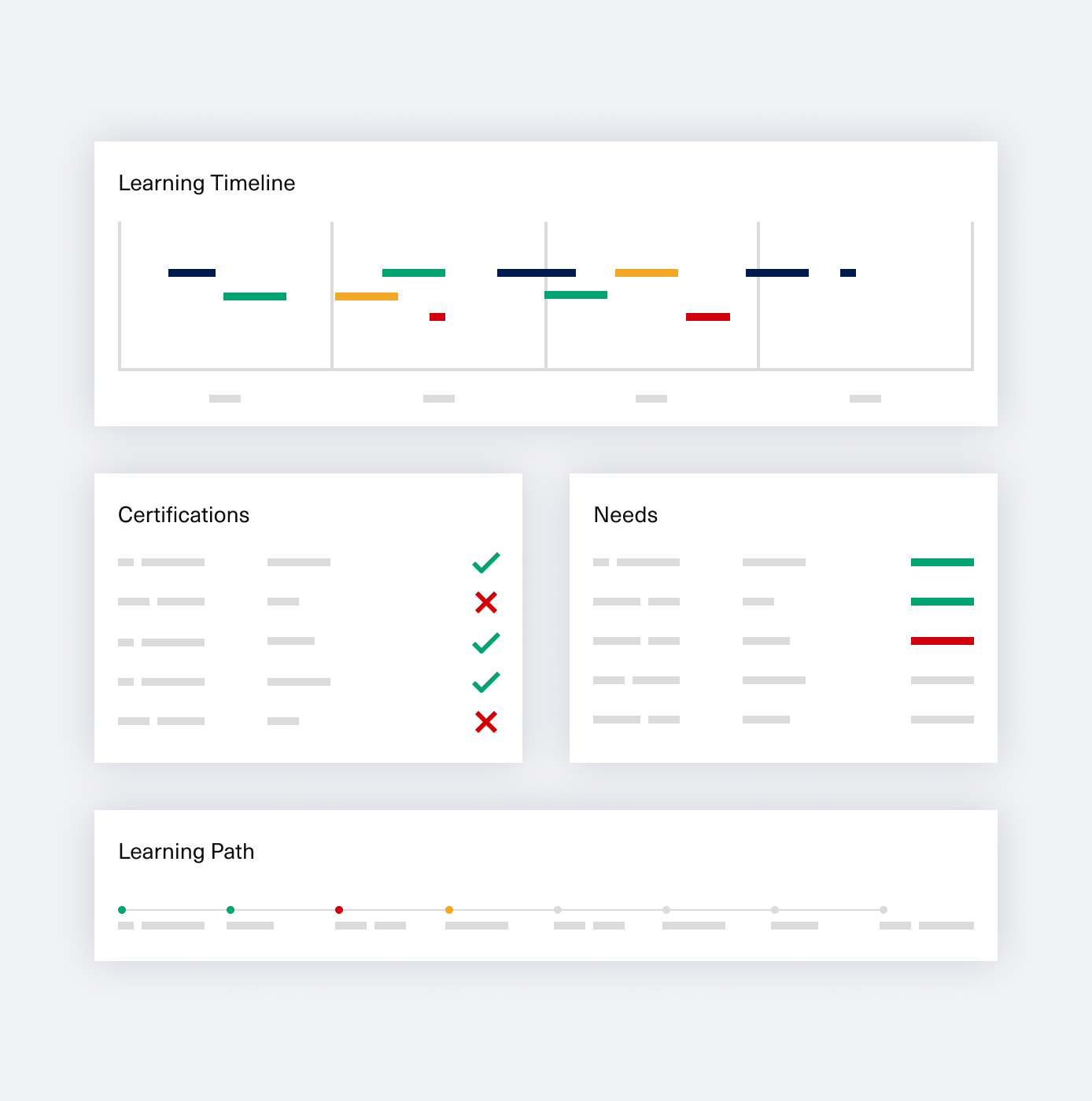More and more companies are embracing a skills-based talent strategy. This trend has gathered momentum as the rate of technological change has accelerated, making it harder for organizations to predict where their workforce will be in five years from now. It is no longer an option but a necessity for leaders to create and maintain agile organizations and for employees to do work that matters right away.
What is Skills-Based Talent Management?
In contrast to a traditional talent management approach, skills-based talent management is not based on a person’s position or title. Instead, it focuses on what people can do and how their skills can benefit the company. This approach allows companies to make better hiring decisions, put employees in positions where they will excel, and develop training plans to help employees learn new skills or enhance current ones.
For example, job descriptions for marketing professionals may include “knowledge of marketing principles.” A skills-based talent management program may require that an employee list specific software proficiency such as Photoshop and Illustrator. In this way, skills-based talent management helps organizations become more agile by providing a broader pool of available resources to meet changing business objectives and priorities.
Skills-based talent management also makes it easier for organizations to implement a matrix structure where individuals report to multiple managers. This approach is more effective as it allows employees to leverage their unique knowledge and skills without being limited by reporting relationships.
Why Skills Matter: The Need for Agility
Agility is the capacity to move quickly and easily. It’s a word that we’re all familiar with, initially from athletics, but more recently, from the workplace. “Agile” has become one of the biggest buzzwords in business today. It is a philosophy with origins in software development but has been applied to almost every other aspect of business. Fundamentally this is because agility is about how organizations adapt to change – and in today’s world, there’s no shortage of things that can change.
What is organizational agility?
Organizational agility means different things to different people. The most straightforward definition comes from McKinsey & Company: “the ability of an organization to renew itself, adapt, change quickly, and succeed in a rapidly changing, ambiguous, turbulent environment”. Breaking down the concept into actionable parts, Dr. Linda Holbeche (former Director of the CIPD), in her book “The agile organization: How to build an engaged, innovative and resilient business”, names the following as the building blocks of organizational agility: the ability to adapt, ability to manage change, speed and innovation.
Why do organizations need agility?
Because inevitably, the market changes. To be successful, organizations must have the ability to adapt to those changes quickly.
Skill-based talent management plays a significant role in enabling organizational agility. It helps organizations identify their employees’ current skillset, training and development needs, and skill gaps. Companies can then use this information to create career paths and development plans that help employees acquire new skills to prepare for shifts in the organization’s strategy or direction.
What are some key steps for creating a talent management program that drives organizational agility?
1) Identifying your organization’s strategic goals
2) Identifying what skill sets are needed to achieve those goals
3) Analyzing your current workforce against those skill sets to identify potential skill gaps
4) Developing a plan for closing those skill gaps through employee training and development
Embracing a Skills-Based Talent Management Strategy
Skills-based talent management focuses on identifying and nurturing skills within your existing workforce. This strategy is a natural result of the shift in today’s economy towards a knowledge-based system where the intellectual capital of employees plays a more significant role. While this may seem like a simple concept, it is surprising how few organizations currently embrace it. It requires a shift in thinking for companies that rely heavily on job titles and descriptions to understand what work needs to be done.
To begin this journey, managers must understand the tasks involved in each job and assess each employee’s strengths and weaknesses against those tasks. This requires a shift from “We need an experienced marketing manager” to “We need someone to write press releases”.
Once you know what skills each job requires, you can look within your organization for someone who already has those skills or develop a training program to help people acquire them. You might find someone in accounting who is excellent at writing press releases or identify a junior marketer who could benefit from extra training in public relations.
If you haven’t yet adopted this approach, you should know that disrupting the status quo cannot be taken lightly. It requires a well-planned and executed transition strategy, supported by a clear business case for change.
So how do you get started?
Start by defining your target end state. Once you have a picture of what “good” looks like, you can begin to plan the steps that will take you from where you are today to where you need to be. This includes identifying key milestones and bottlenecks and creating an implementation plan with realistic timeframes and resources.
In some cases, there may also be a need to build awareness in advance of the coming change among key stakeholders. For example, it may be necessary to provide training on new roles and processes or new skills-based talent management tools if they are introduced as part of the transformation project. Working in close collaboration with senior leaders who can champion and communicate the change across the organization is essential to set up any new approach for success.
As skills-based talent management strategies become more prevalent, organizations realize the importance of bringing out the best in their employees and ensuring they’re in the right roles. Employees that feel appreciated will be more motivated to contribute to your organization’s success. Besides improving employee morale, skills-based talent management offers other benefits to businesses such as:
– lower turnover rates, resulting in lower recruitment costs;
– higher productivity;
– a better alignment between employee skills and organizational goals resulting in increased profitability;
– shorter timeframes for onboarding new employees and getting them up to speed with your organization’s goals, resulting in tangible business gains.
Redefine the Role of Leaders and Managers
The heart of skills-based talent management is the concept of “learning agility”: the ability to learn new skills quickly and apply them effectively. Learning agility is one of the most reliable predictors of leadership success. It is more important than previous experience, level of education, or other traditional forms of selection and assessment. Your task as an HR or L&D leader is to help learning agility thrive in your organization, in your leaders, and your employees. To do this, you’ll need to redefine the role of leaders and managers.
Leaders and managers play a critical role in helping to move their organizations from a traditional talent management approach to a skills-based system. While the existing hierarchy of business roles remains, job responsibilities and expectations changes will require leaders and managers to think about their jobs in new ways.
To support the larger business goals, the roles of leaders and managers must shift to focus on identifying skills gaps, coaching and mentoring, career growth opportunities, and ensuring employees are engaged in meaningful work. This is critical because most organizations are still very much in a position of leaders and managers responsible for day-to-day operations telling people what to do. Naturally, this way of understanding work accountability will need to fundamentally change to move to a more skills-based talent management approach.
Leaders will be responsible for creating a culture that values curiosity and innovation. Employees must feel comfortable taking risks and trying new things, even if it means making mistakes along the way. Leaders will incentivize teams and individuals with rewards for innovative thinking and behavior change. They will also be responsible for ensuring that all employees have access to the tools and resources they need to upskill themselves and others.
Managers, who have traditionally been assigning work based on job titles, will now be responsible for understanding their employees’ skill sets and interests and recognizing opportunities for upskilling within their team. Managers will also play a crucial role in supporting employees by offering encouragement, guidance, and feedback throughout their careers.
Rethink Learning and Development
To meet the challenge of consistently providing a talented workforce, organizations must shift away from their traditional approach to learning and development. The new system involves a more flexible, holistic view of talent management that considers each employee’s skills, experience, and aspirations. Organizations seeking to gain an edge in the battle for talent must rethink approaches from the ground up, this time with skills at the center of their strategies.
To start, shift your focus to developing skills primarily, not just knowledge acquisition or general behavior change. Skills are the building blocks of work, where employees get things done with their hands and minds. And they’re universal across employees, teams, and functions. For example, effective communication is a skill that employees can apply in sales, marketing, and production roles — not just in communications jobs.
Another change you can make is to enable learning to happen on-demand when employees need it most. The day-to-day workflow offers a constant stream of learning opportunities, moments when employees want to close a skill gap or learn how to apply an existing skill in new ways. But they don’t want to wait until the next course is offered or until they are assigned a formal project. And they certainly don’t want to spend hours searching for an answer online or blindly trying to figure out what to do.
At the same time, management systems and HR processes need to change and become more focused on skills. Companies need to evaluate employees on their skills, not how long they have been employed, for example. Performance management systems should be skill-based and have employees and managers continually identify learning needs. This way, employees can be sure that the company is willing to invest in their career and development.
Takeaway
If your organization wants to be able to grow and adapt to the world around it, it has to start investing in the skills of its employees and fostering an environment where they feel happy and confident in those skills. If this sounds like a major undertaking, you should know that it does take some foresight and planning; that said, it is entirely achievable even in a large or complex organization. Consider what skills might be essential in the future, then give your team the training, resources, and support they need to continue mastering them.
At the same time, make sure that job postings cast a wide net so you can attract top talent that is interested in developing new skills. You can also share any resource materials (such as guides or articles) internally through company intranets so people can stay up-to-date on changes in their industry.
It’s true that most organizations today already have a talent management strategy in place. Their approach is usually informed by the latest HR research, and it’s usually a good fit for the company’s current industry, size, and culture. But just because an organization has adopted a specific strategy doesn’t mean it has to stick with it forever. That talent management approach may have been practical when initially implemented, but it becomes less relevant as the organization changes and evolves over time.
Accepting change and embracing a strategy that accommodates it is the best way to future-proof an organization; adopting a skills-based talent management strategy is an excellent method to achieve this goal.



















